By Rick VanSickle
Oh, yeah, and everyone had a big laugh. Gift the wine writer a chilled bottle of Baby Duck and hilarity ensues.
Also in this Ontario Wine Report: New Chardonnay from 80x reviewed, our picks from the March 30 Vintages release, and a new consumer VQA wine taste event in Ottawa.
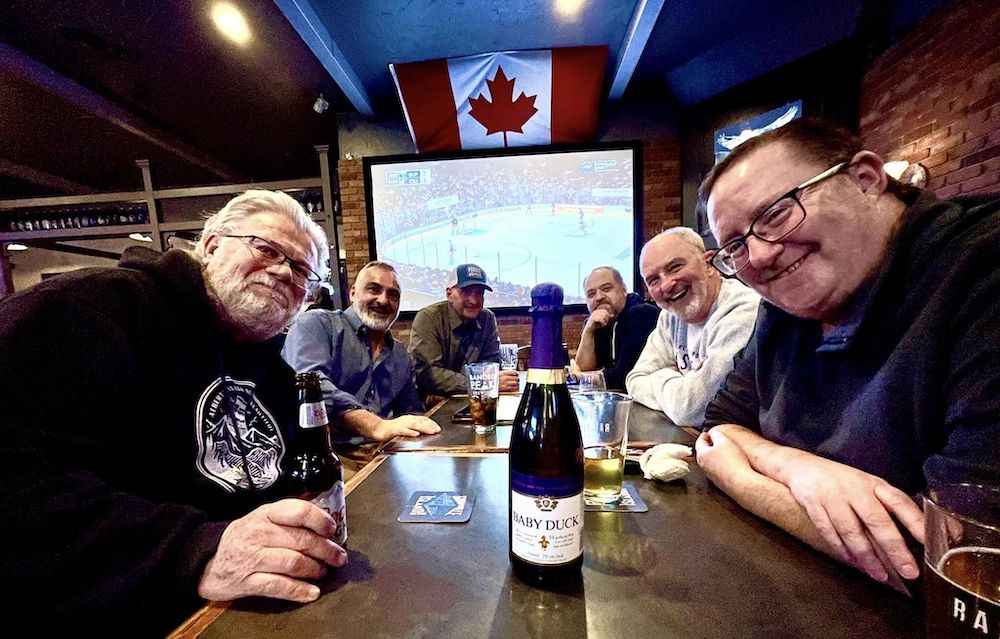
It was mildly funny in 2001 when then Calgary Sun sports editor Martin Hudson (above left) brought a cold bottle of the wildly popular Baby Duck to our house in Calgary for a dinner party. I was a senior editor and the wine writer for the paper at the time. And, yes, there were a few more laughs 23 years later when Hudson gifted me another bottle of Baby Duck at a Calgary Sun newsroom reunion this past month.
I, in turn, re-gifted that bottle to my former boss and publisher at the Calgary Sun, Guy Huntingford, when we met for a drink at my hotel bar the following day. I had arranged with the server to bring the Baby Duck and two wine flutes over to our table when Guy arrived. More laughs. Huntingford in turn re-re-gifted the bottle to the young server who seemed only too happy to accept the vinous gift.
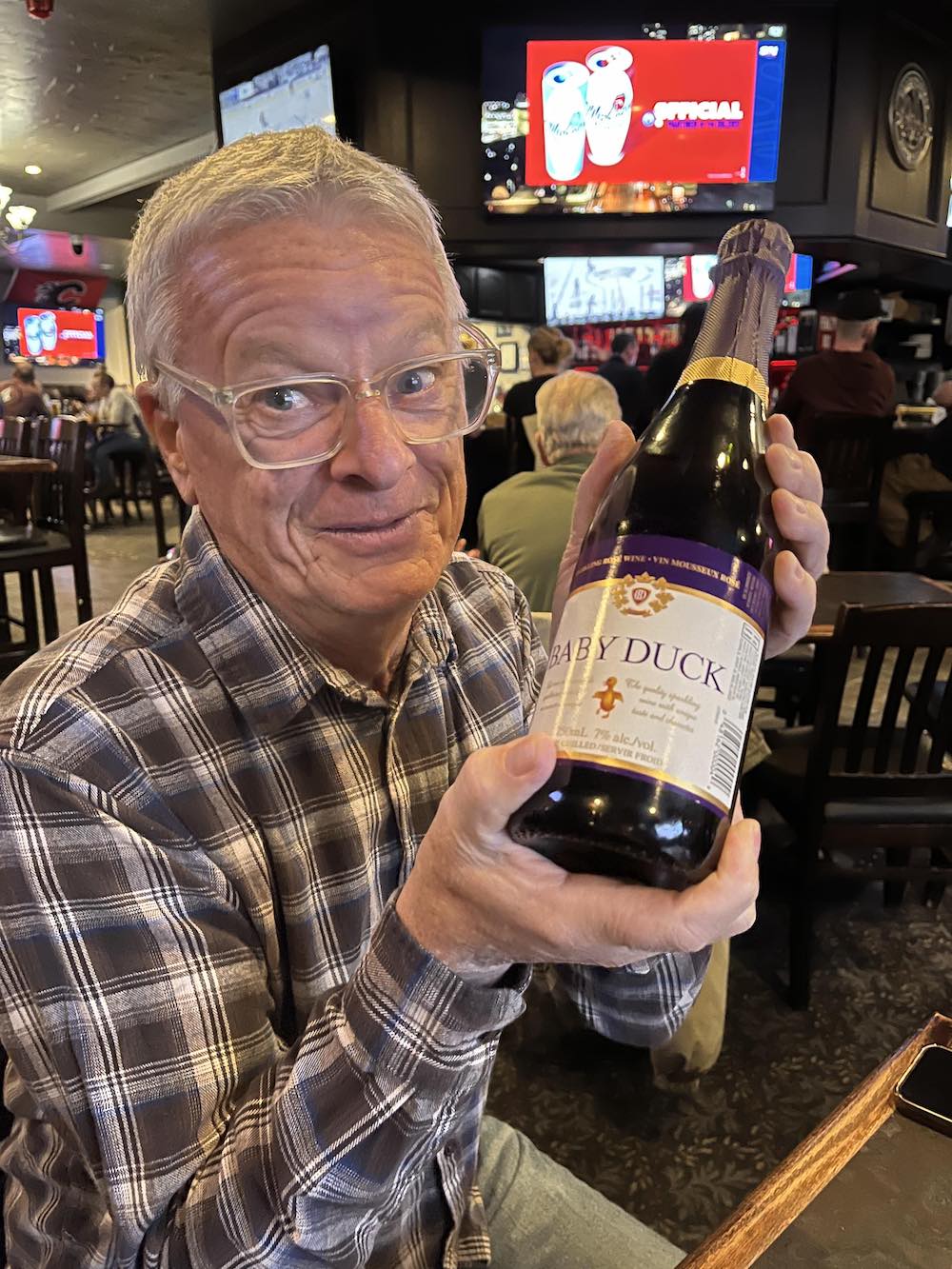
We can joke all we want, but Baby Duck is one of the great success stories in Canadian wine, and the biggest laughs now are from the bean counters at Andrew Peller Ltd., which owns the brand and has been swimming in the profits ever since its inception in 1971.
When I posted the photo above of that gifted Baby Duck with the simple caption on my Wines in Niagara Instagram account: Did someone say #openthatbottlenight ???🍾🥂, many who remember the sweet legacy of that sparkling rosé wine piled on with their own brand of humour undoubtedly prompting many guffaws. However, it was one sobering comment that stood out for me.
It was from @benchwineguy (Vineland Estates winemaker Brian Schmidt): “A piece of living history … I am always inspired by the idea that 100s of thousands perhaps 10s of millions of people began their wine journey with this wine. I for one hold this wine in high regard. As I do with Mateus … all journeys begin with the first step.”
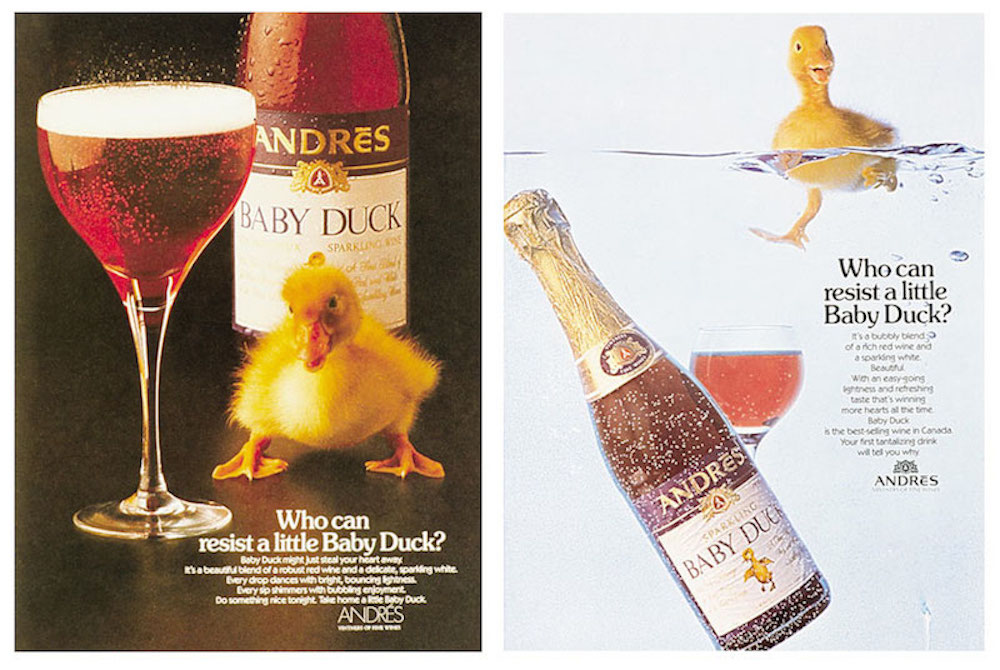
And who I am to criticize the enduring success of Baby Duck? My generation, so bland they called us Baby Boomers II (like, we couldn’t even have our own cool generational name), learned from our parents. They consumed an ocean of dry vodka martinis (the most daring added a couple of pimento-stuffed olives), rye and ginger ale, and three kinds of beer in stubby bottles. Wine, which was sold in limited choices at government monopoly LCBO stores, where you had to fill out a chit to get it, was for special occasions and your chance of seeing a bottle of Baby Duck at any memorable moment was about 99.9%. Our house in Etobicoke always had Baby Duck on hand, as did the neighbours on either side of us and every house up and down our street in Humber Valley.
It’s no wonder that the BB2s thought they had died and gone to heaven when the greatest invasion in the history of wine hit our shores with boatloads of heavily oaked Chardonnays and Shirazes from Australia.
That was it. Let the good times roll. Our generation, weaned on an uninspired diet of Hungarian Szekszardi (affectionately called “sex on Saturday”), Chianti from bottles wrapped in straw, sickly-sweet Blue Nun, and mildly sweet Mateus, was suddenly lapping up these big Aussie wines at a scary rate while the land Down Under scrambled to plant more vines in the ground and order copious amounts of oak chips and barrels to feed the astonishingly thirsty and lucrative market. We were leaving the likes of Baby Duck in the rear-view mirror for the sake of wines that would be questionable to the generation coming up behind us.
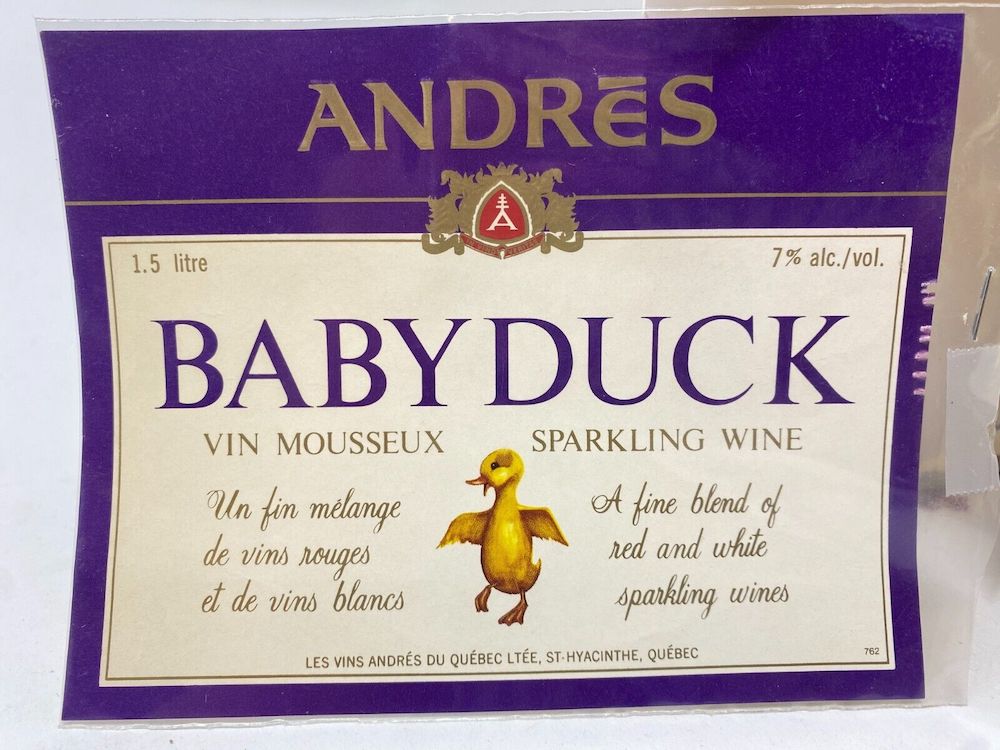
I can remember serving Lindemans Bin 65 Chardonnay (still going strong today at $10.75 a bottle) at our wedding when it was an unknown. It was so smothered in oak that we handed out tooth picks to dislodge oak chips from between our teeth. Our generation couldn’t get enough of it; anything with a bin number and a critter on it was pure gold to us. That trend would migrate to the rest of the wine world once Australia started dominating shelf space. California, Chile, Argentina and even Canada, continued the BIG WINE revolution with over-oaked, over-saturated and over-cooked red and white wines.
Miraculously, Baby Duck never wavered in the face of the progress in wine variation and quality since it was introduced into the world in 1971. At its peak of popularity in 1973, eight million bottles of the rosé bubbly style of wine were produced and, I assume, consumed about an hour after it was purchased. Today? No idea. I reached out to the LCBO to ask how many bottles they sell per year and the only response I got was to ask Peller, which owns the brand. Peller said they would get back to me on that and also my other questions on how the wine was made and what grapes were used. I’m still waiting for the info.
I did some research and found that after going from zero to 8 million bottles (667,000 cases) in 1973, Baby Duck was as successful by volume in Canada as [yellow tail] was in the U.S. By 1975, it represented a record 25% of all wine sales in the province of Ontario. Ironically, 1975 was also the year Inniskillin Estate Winery made history when the founders, Donald Ziraldo and Karl Kaiser were given the first winery license in Canada since Prohibition.
Baby Duck remains the most financially successful wine brand launch in Canadian history and still sells through the LCBO with an estimated 100,000 bottles (8,335 cases) sold in 2022 (with over 60,000 cases sold in Canada, according to a source). A far cry from the heydays, but 68,000 cases is a lot more wine than most wineries in Ontario produce annually.
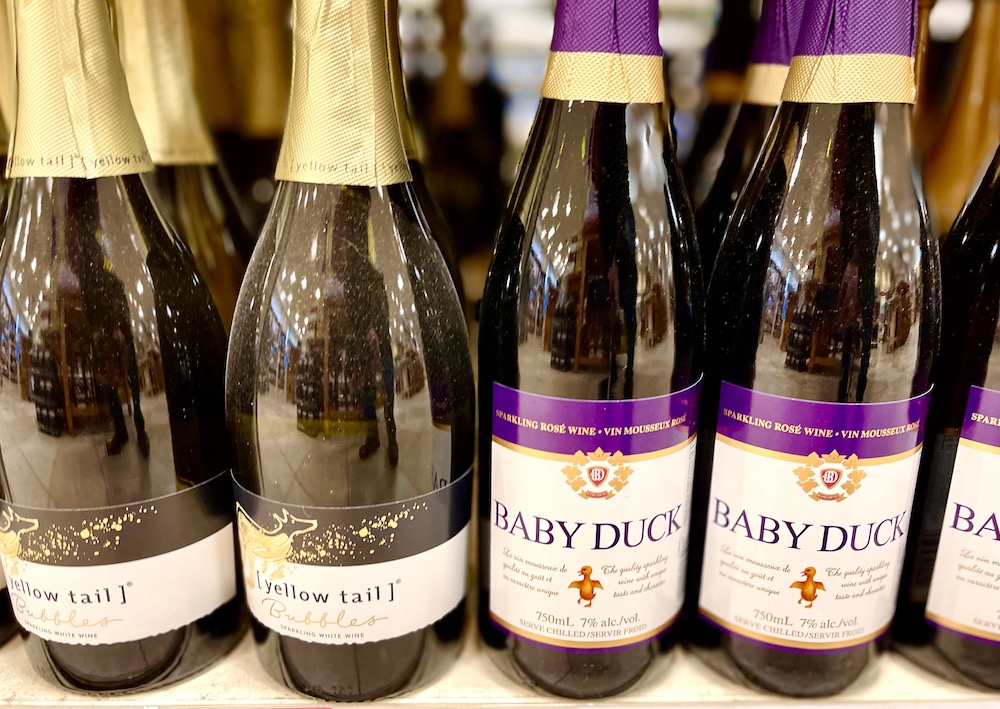
Coyote Marketing Inc., a group of eight senior marketing and communications professionals, wrote some time ago about the comparisons between Baby Duck and [yellow tail], suggesting the former brand should have been put out to pasture a decade ago or more.
Coyote wrote, that “leading up to the 1960s, the most popular Canadian wines were ports and sherries. That’s because the cold-climate grapes grown at that time were of lower quality and needed extra sweetness to make their wine more palatable. Extra alcohol content also allowed Canadian fortified wines to match their Old-World big brothers more closely in flavour profile — which was not achievable in table wines. How sparkling wines became popular in the 1960s is unclear, but the slight tartness of carbonation reduces the perception of sweetness — and creates the light mouthfeel of soft drinks.”
Coyote argued that “inexpensive sparkling wines from the U.S. (Cold Duck) and Portugal (Mateus) were also gaining popularity at this time. In the mid-1960s, several Canadian wineries, including Andrés, launched their own versions of the U.S.-inspired Cold Duck. Some were at 7% alcohol by volume (abv), half the content of standard wines, allowing for a lower price point.”
In 1971, Andrés tried to register Baby Duck as “Canadian Champagne” and failed. But the bottle shape, caged plastic cork and foil dressing created the impression it was Baby Champagne. At 7% abv and using inexpensive grapes, it was the cheapest thing on the retail shelf that looked like Champagne.”
Andrés invested heavily in traditional print and TV advertising. The ducklings created the impression the brand was cute, innocent fun. The print ads won Clio awards. And it seemed everyone was drinking buying into the hype.
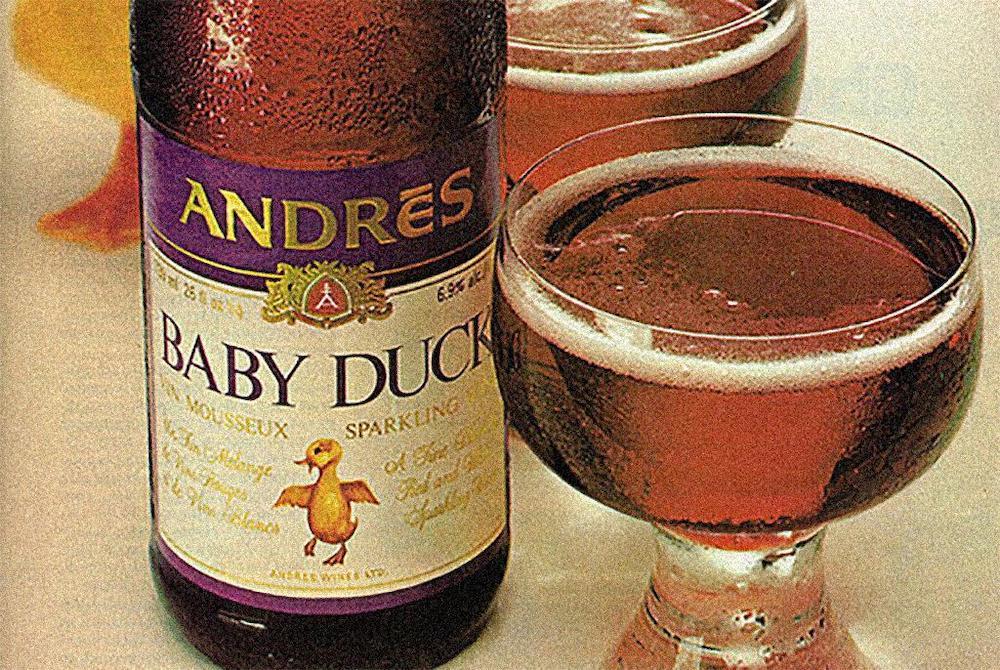
Andrés went public in 1970 as plans for the launch of Baby Duck were developing, according to Coyote marketing. “The IPO helped fund the Baby Duck launch, the success of which made Andrés an excellent investment over the first 10 years. Andrés launched more me-too value wine brands during the 1970s and 1980s. In the 1990s, they got serious about moving up the wine quality spectrum. They did this through acquisition of mid-market wineries like Hillebrand, and in 2001, opened the showpiece Peller Estates Winery at Niagara-on-the-Lake.
In 2006, Andrés rebranded as Andrew Peller Ltd. This was followed by acquisitions of more award-winning premium wineries, and in 2017, super-premium wineries. Since 1995, Andrew Peller has made more than 18 acquisitions for more than $210M. It now accounts for 37% of Canadian domestic wine sales by volume, noted Coyote.
But the advice Coyote had for Peller, was that the company “should have killed Baby Duck when it was starting to decline in the early 1980s. Definitely by the mid-1990s when its premiumization strategy was playing out. The company has not needed Baby Duck’s revenue contribution for decades and it’s not like they’re proud of the brand.”
Ouch. Yet, here it remains, albeit a mere shadow of its former self and relegated to the bottom shelves of LCBO stores wedged between [yellow tail] and Blue Nun sparkling wines in the international sparkling wine section of the stores. You are hard-pressed to even know the wine is a Peller product, or where it’s made (B.C. or Ontario) and what it’s made of. The label only mentions Peller in the smallest of print legally possible on the back label, when at its peak the name Andrés was proudly displayed on the front label and in advertising campaigns. Baby Duck, at one time the company’s most profitable brand, isn’t even listed on the Peller company website.
Baby Duck, the once mighty fixture in Canadian homes from coast to coast, is no longer the juggernaut it once was, but with 100,000 bottles sold in 2022, it’s hard to give up on that kind of revenue, especially for a publicly traded company.
The jokes and parodies will keep on coming. When I bought my bottle for this report, I politely asked for a receipt from the friendly LCBO check out clerk. When she exclaimed rather loudly, “Baby Duck! That’s the (expletive deleted) we used to drink in high school,” I asked her to please not shout that out so loud. The woman behind me had a big grin on her face. Laughs all around. They never seem to end.
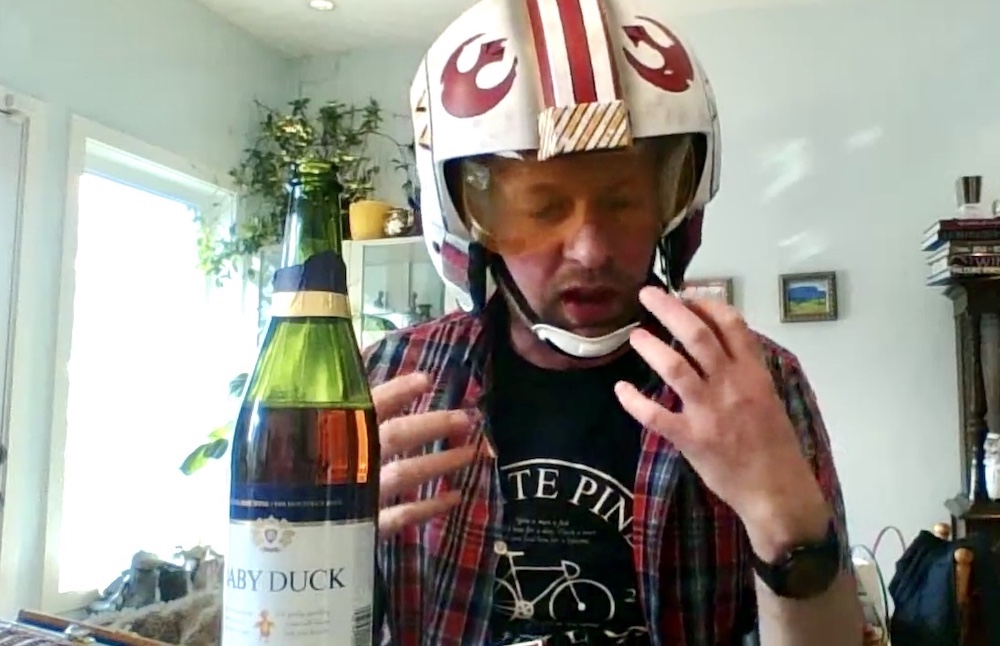
The best video in recent years I’ve have watched about Baby Duck was from Winnipeg Free Press drinks writer Ben Sigurdson, above. He dons a helmet and digs into the bottle from every perspective you can imagine. He does it with passion and his trademark understated skepticism for a humorous look at this one-time sensation on the Canadian wine scene. He doesn’t discount it entirely but struggles to define just what he’s tasting. Take a look here.
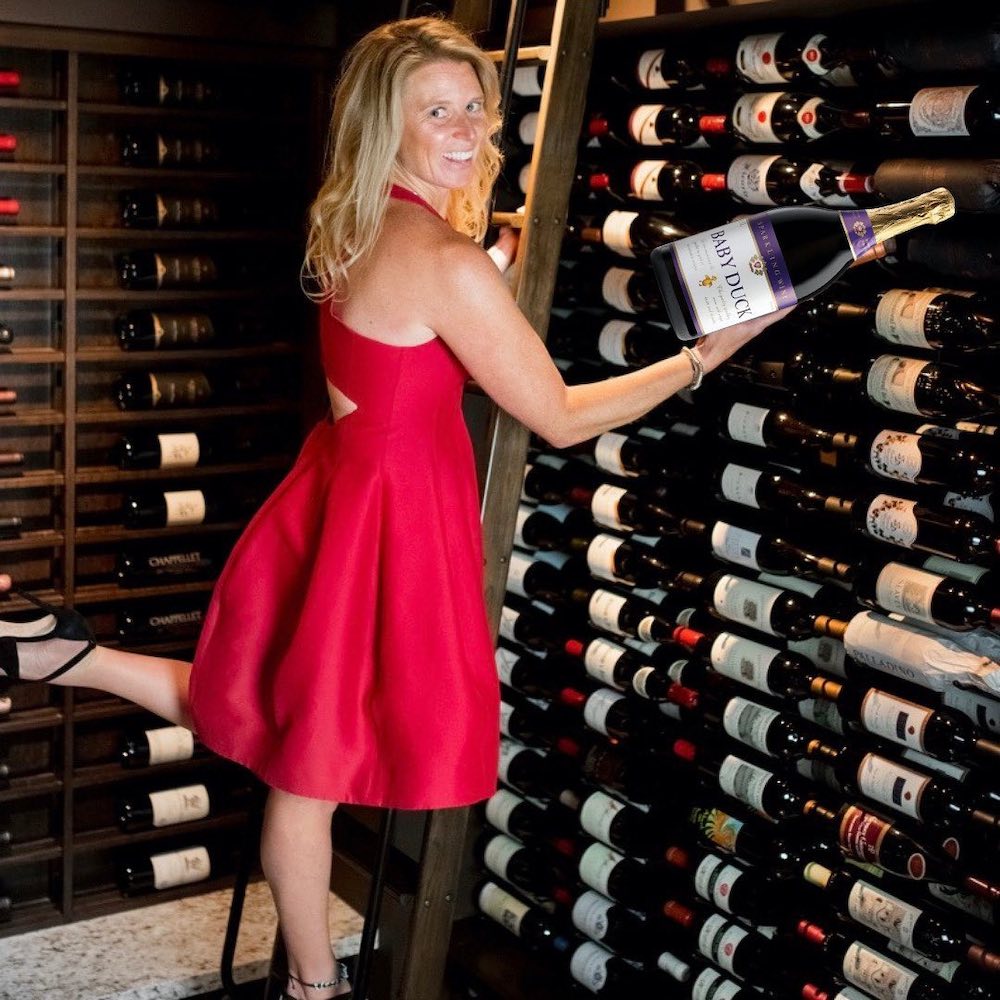
And then there was sommelier Jennifer Carruthers @jcselectwines who famously made an April Fool’s joke at the expense of Baby Duck on her Instagram account. “Introducing the latest and by far greatest sparkling wine in my portfolio. So proud to be selling this gateway to palette perfection … Sweet as Dimetapp with hints of leftover Welch’s juice box … This might just be the only wine I ever drink again,” she wrote to go with a few memes she created.
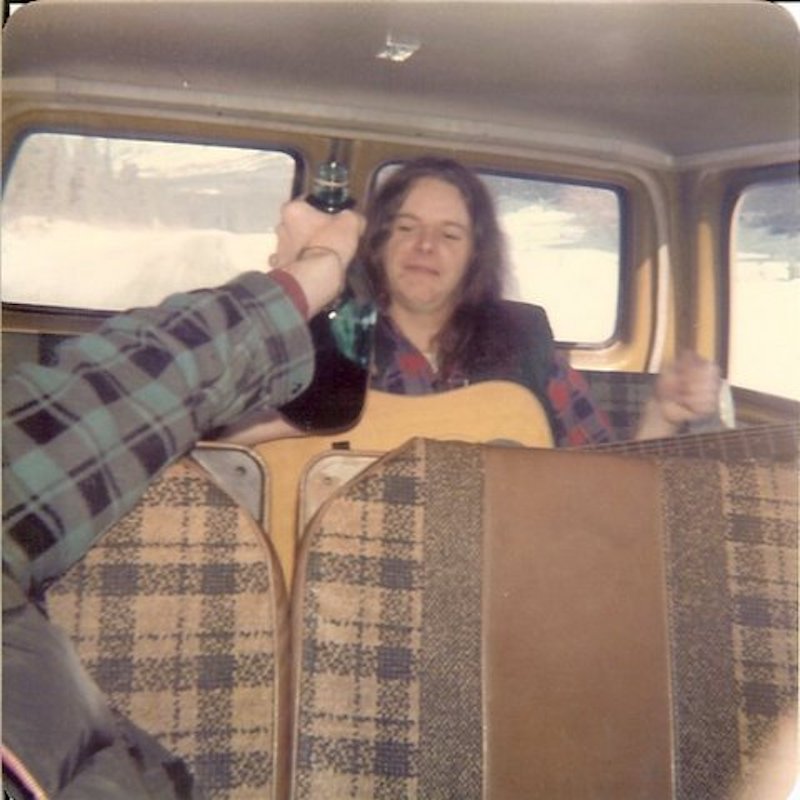
Yes, Baby Duck has enjoyed a full life that was an easy thirst quencher for millions of people looking for cheap and cheerful alternatives to expensive French Champagne. I, for one, can hardly be too critical of the brand. I was drinking something we called “Ruby Rouge” from screw cap gallon jugs in the back seat of a 1960-something International Harvester panel van (see photo, gulp), which was totally legal back then (even in your vehicle) in my early Yukon days. I survived that part of my formative wine drinking years experimenting with the only wines I could afford, and I am doing just fine now, thank you very much. At some point we all move on.
Is Baby Duck all it’s quacked up to be?
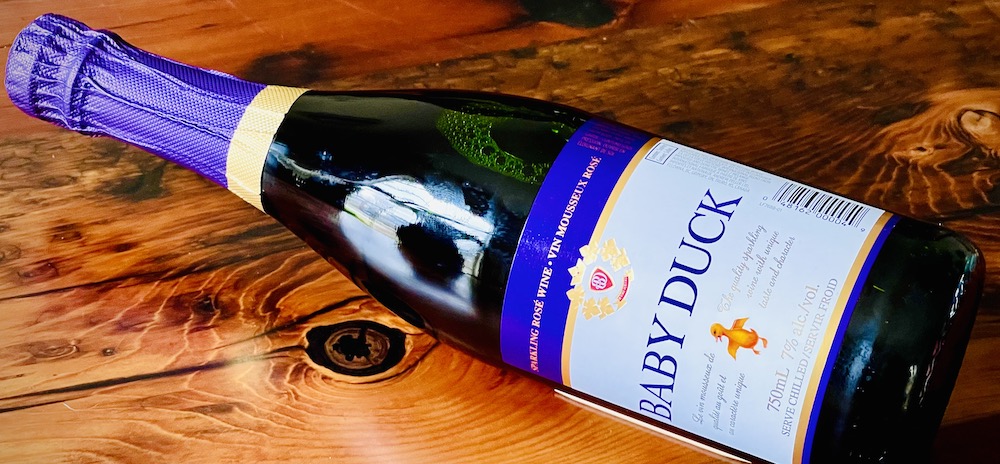
Baby Duck ($9.65 for a 750 mL bottle) — Vitis labrusca (in other words, Concord/Niagara grapes) form the base for Baby Duck when it was first launched. Today, or at lease pre-2000, the Concord and Niagara grapes were sourced domestically, with a substantial amount of water to get it down to 7% abv and sweetened with high fructose corn syrup to get it to 67 g/l of RS for the final blend. I was egged on to taste it, so after about an hour of chilling it, which was exactly an hour after buying it, I got to it. I put my substantial beak in the glass after popping the plastic closure and got a whiff of Jolly Rancher cherry gummies, Welsh’s grape juice, red Twizzlers and a musky/perfumy note. It showed a bright candy apple red colour in the glass with bubbles that faded quickly. It wasn’t as sweet as I thought it would be due to high acidity, and I was down with that. Thinking that chicks might dig this more than me (OK, reaching here, but it’s all about the puns at this point), I invited a person in my household (who did not want to be identified, but who is female and the mother of our two children) to taste the wine blind. She has a wee bit more experience with these, um, fancy wines. She grabbed the glass with a feather touch and took a long, long sniff. “I smell cherries.” And after a big sip, she noted, “it’s not too sweet, like is it a fruit wine? It tastes like tart cherries, I would drink it, it’s not offensive. Is it a cherry wine? Enjoyable, I guess.” I suspect that’s about what you would expect for a sub-$10 sparkling wine. And you know what, pair it with a little foie gras, and voila!
Fun fact: The one thing that the LCBO did impart about Baby Duck to me: “The magnums will be back soon.” Well, good to know, twice the fun.
A Dam good Chardo
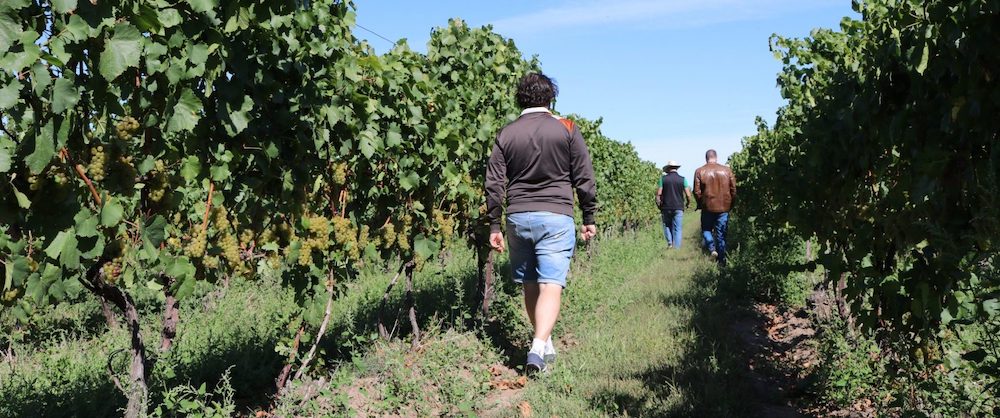
The 80x Wine Company is a micro-virtual project created by wine journalist André Proulx and Kacaba winemaker and Vadim Chelekhov in 2015. Guillaume Frénéhard and Adam Kern joined the team later. After five vintages together and some hard lessons, 80x is now focused on creating small-lot rosé, Chardonnay, and Pinot Noir from carefully selected terroirs. The Dam Chardonnay below can be purchased at Rockway Vineyards in St. Catharines.
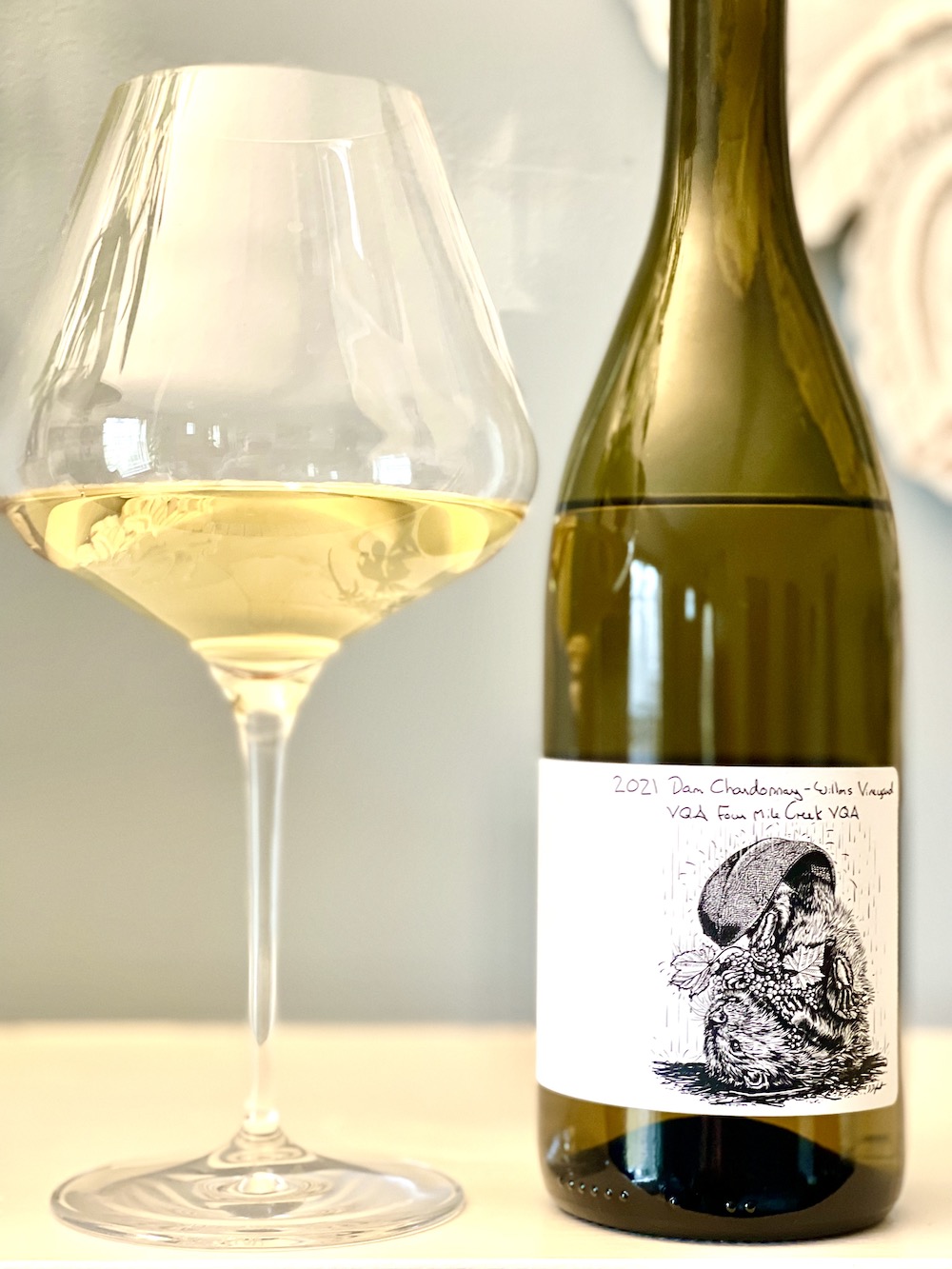
80x Wine Company Dam Chardonnay Willms Vineyard Chardonnay 2021 ($30, 92 points) — The 2021 vintage was a tricky one for winemakers who had to navigate a wet, dreary fall. The grapes were sourced from the Willms Vineyard in Four Mile Creek, which was planted in1983. “We hand harvested the fruit in this vineyard with close friends and family,” said Proulx. “To say it was a sticky and damp day is an understatement. We were joined by Erv and Esther Willms who helped us harvest fruit. Hand sorting in the vineyard before the fruit ended up on the crush pad.” The extra attention to sorting paid off for this lovely Chardonnay which has vivid, penetrating nose of lemon curd, chalky/saline notes, ripe pear, yellow apple, subtle apricot, creamy/spicy accents and subtle savoury/reductive notes. It’s rich and complex on the palate yet shows freshness and finesse to go with a melange of orchard fruits, citrus zest, saline, toasted almonds, a creamy texture, integrated spice, and a lifted finish. The wine rested in used French barrels for nearly two years before it was released. This can cellar and improve until 2027.
Ontario wines coming to
Vintages stores on March 30
We recommend three Niagara wines and one from Prince Edward County coming to Vintages stores on March 30.

Westcott Estate Pinot Noir 2020 ($32, 92 points) — The fruit is 30% whole cluster fermented with 100% wild malolactic fermentation. It’s aged in 100% French oak, all used barrels, for 22 months. There is a lovely, perfumed note on the nose with Bing cherries, black raspberries, cassis, forest floor, subtle savouriness, and spice. It’s silky smooth on the palate and loaded with red berries, a touch of aniseed and red currants with earthy notes, spice, and a lifted, finessed finish. Can age for a bit to soften the acidity on the finish.
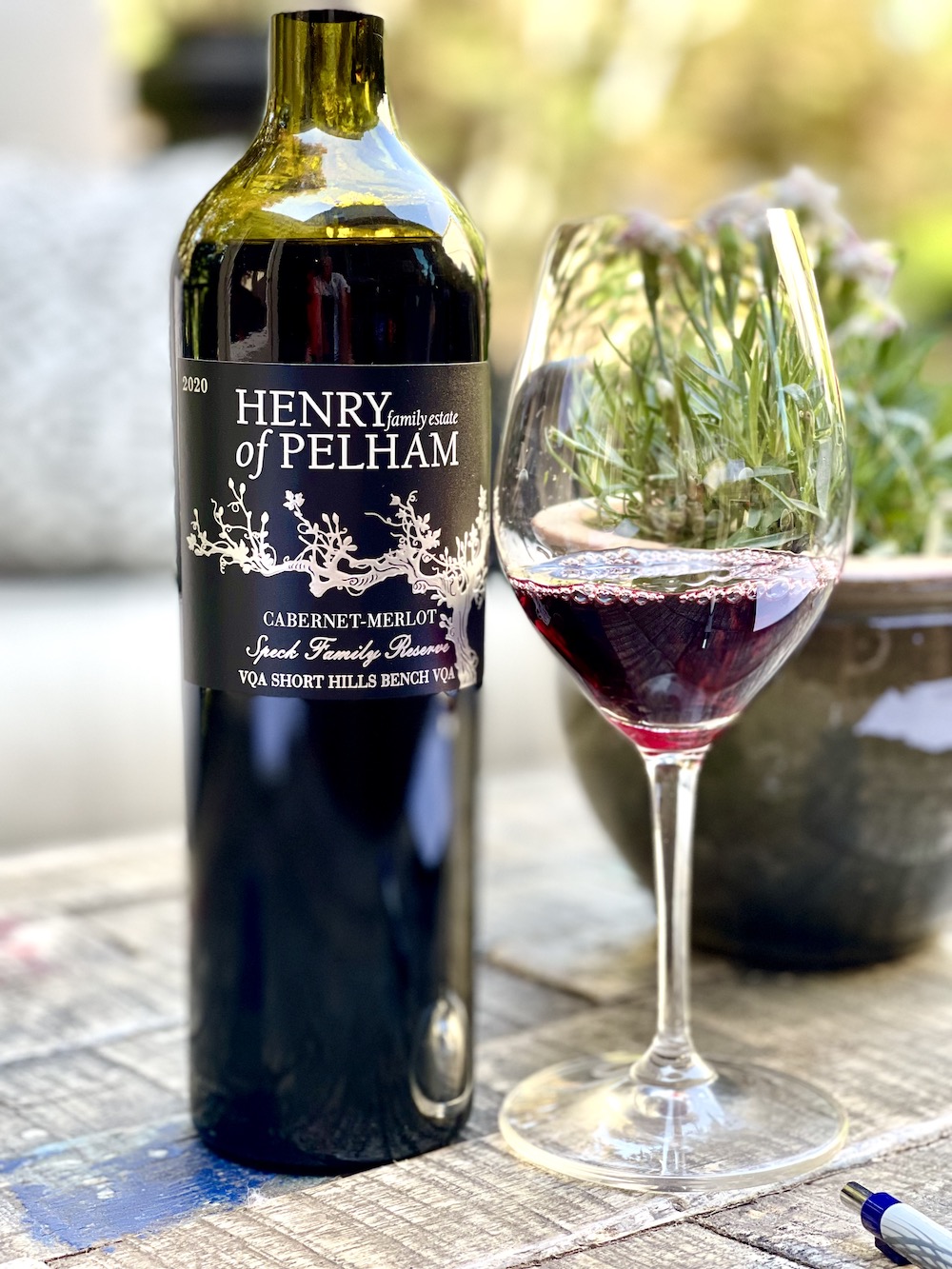
Henry of Pelham Speck Family Reserve Cabernet Merlot 2020 ($48, 93 points) — This top estate red assemblage of Merlot, Cabernet Sauvignon and Cabernet Franc is from vineyards planted in the Short Hills Bench dating back to 1988. The wine was aged in French and American oak barrels, 40% new, for 18 months. What a beautiful, full-bodied red from the near perfect 2020 vintage. It has an inviting, expressive nose of black raspberries, dark cherries, ripe plums, cocoa, cassis, and cedary/perfume notes with rich spice rack accents. It’s dense and juicy on the palate with a firm tannic backbone that displays an array of mature red berries, blackberry preserves, anise, smoky cedar plank, mulled herbs and toasty spices that are all carried through the long, finessed finish. This is still evolving and cellaring is recommended. It will keep improving for 10+ years.
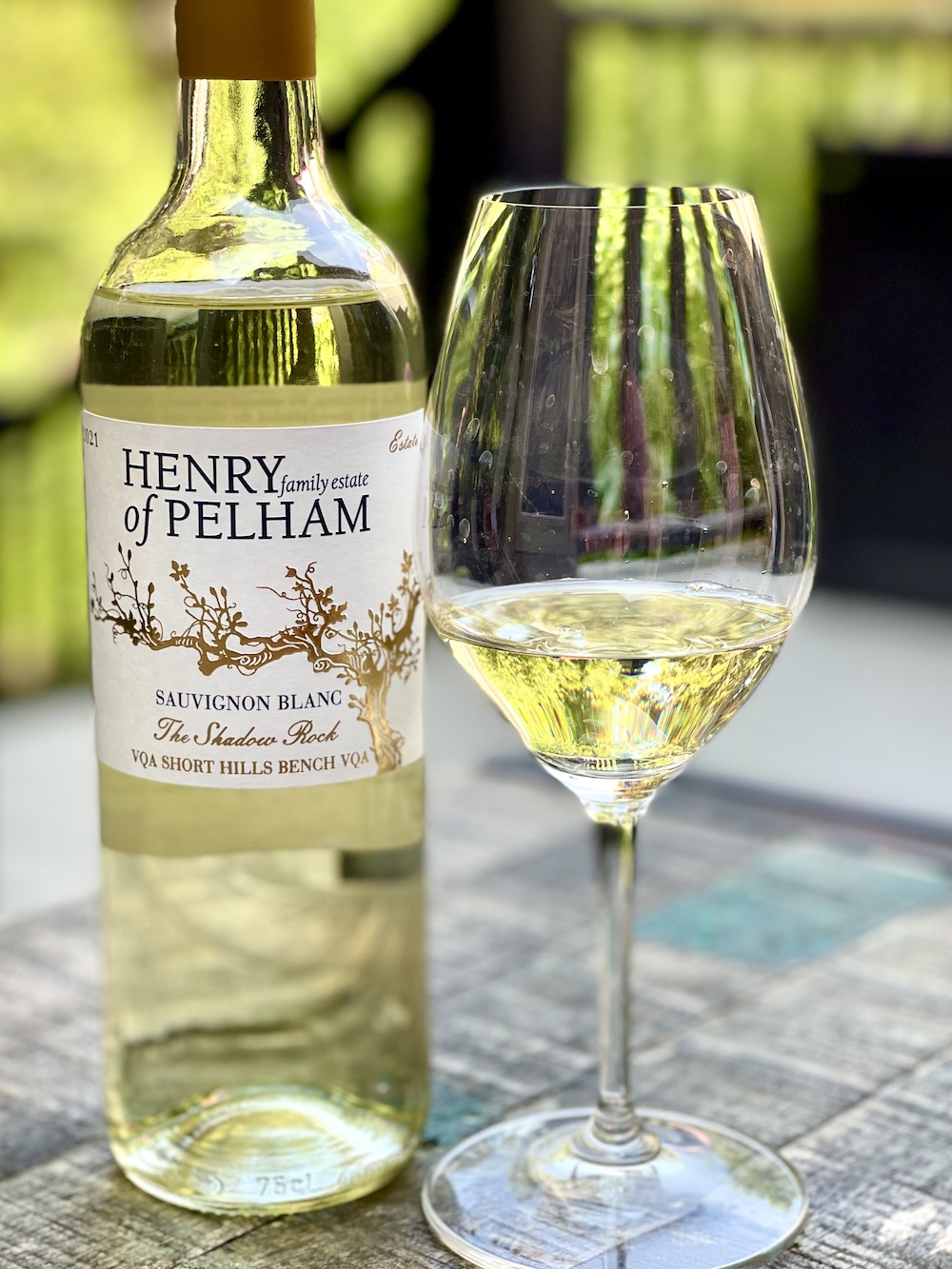
Henry of Pelham The Shadow Rock Sauvignon Blanc 2021 ($22, 88 points) — The nose displays rich tropical fruits, ripe pear, light herbs, grapefruit and lingering spice notes with some oak aging. It’s quite concentrated on the palate with kiwi, passion fruit, pineapple/mango, herbs, grassy notes, subtle spice notes and a rounded finish.
And our pick from Prince Edward County:
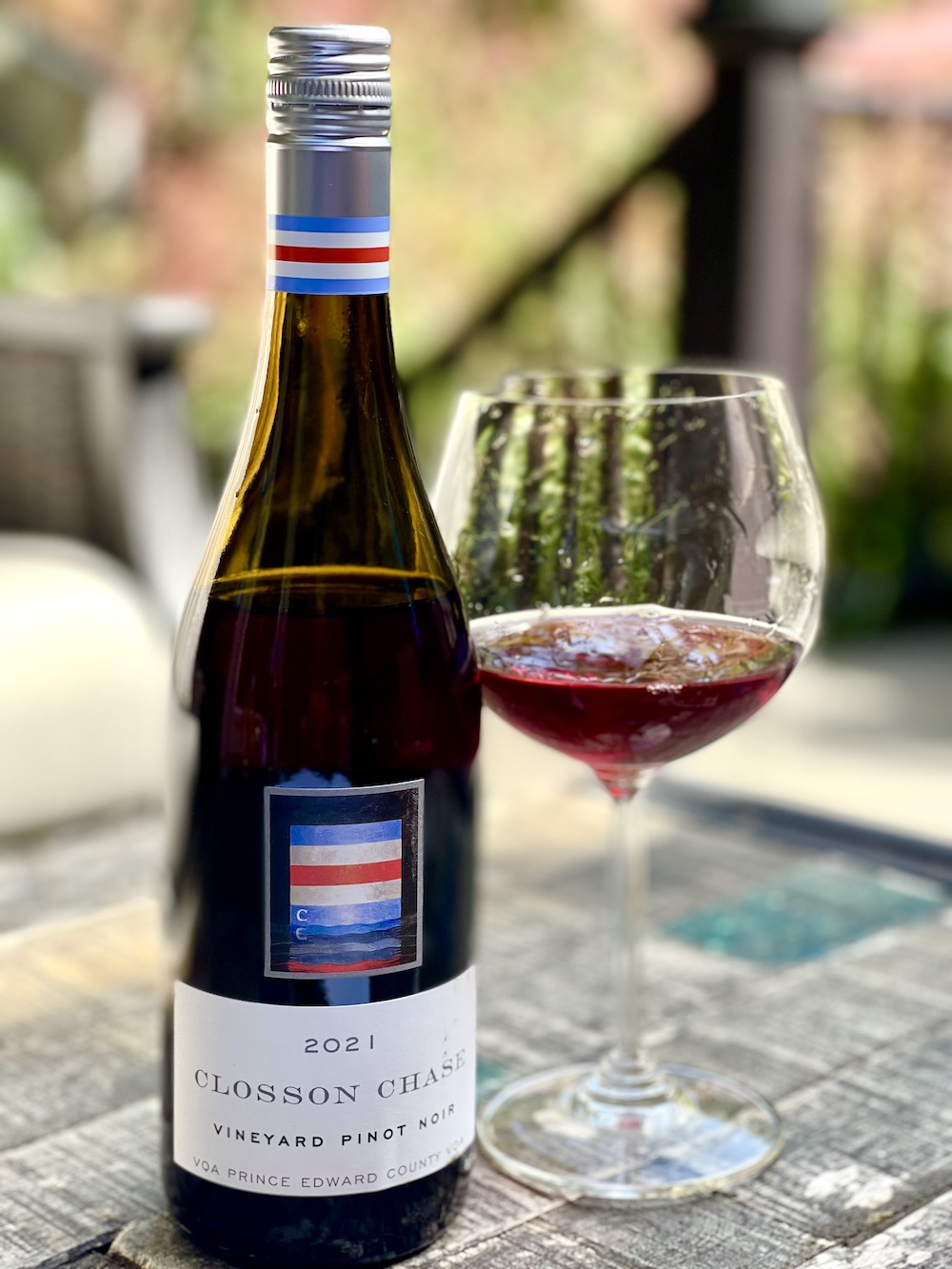
Closson Chase Vineyard Pinot Noir 2021 ($38, 93 points) — The Pinot grapes are sourced entirely from the estate vineyards. It’s destemmed with no crushing and cold soaked for 3-5 days then 75% fermented in 60L oak tonneau and 25% in stainless steel. It’s aged for 18 months in French oak barrels, 5% new. It has a rich, floral nose with brambly black raspberries, dark cherries, subtle cassis, and beetroot with lovely integrated oak spices. It’s a delight on the palate with a soft texture followed by ripe red berries, earthy/savoury notes, subtle herbs, harmonious spices, and a long, lifted finish. Can to 2028.
Other Niagara wines being released, but not reviewed by Wines in Niagara:
• Trius Distinction Cabernet Sauvignon 2021 ($20)
• Featherstone Canadian Oak Chardonnay 2022 ($25)
• Thirty Bench Steel Post Vineyard Small Lot Riesling 2020 ($34)
• Vieni Sauvignon Blanc 2021 ($20)
• Magnotta Venture Series Starlight Sparkling Riesling/Vidal NV ($30)
New VQA wine event announced
for consumers in Ottawa
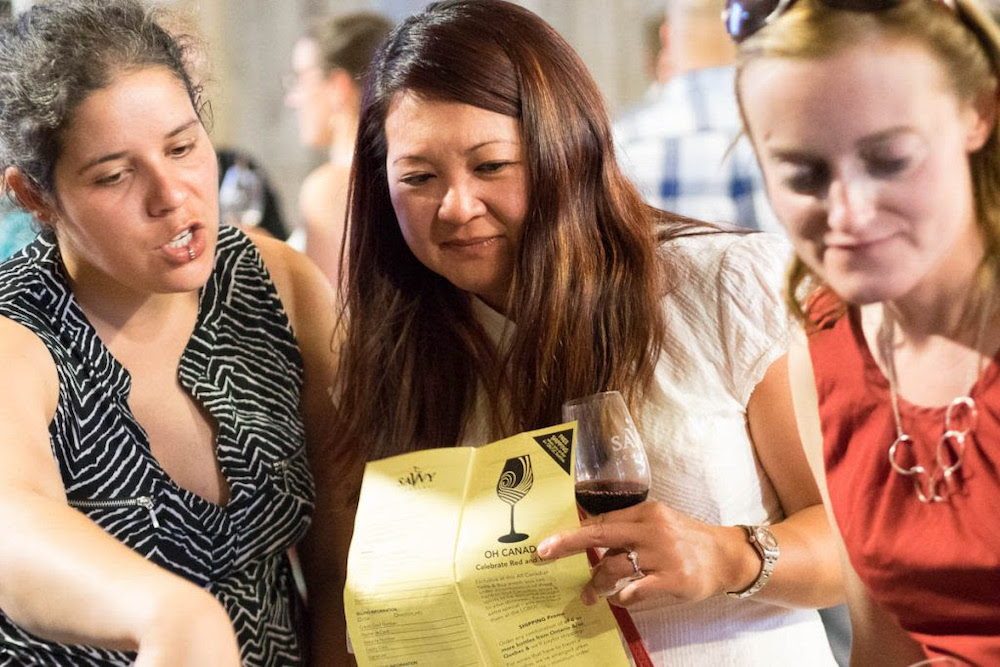
The Savvy Company is hosting a taste and buy evening on Thursday, April 18 at the Fairmont Chateau Laurier. Countless bottles of VQA wines from every wine region in Ontario will be uncorked and ready for guests to sample.
At this exclusive wine event, guests can sample any of the 100+ wines available and then order their favourites. There’ll be special prices and exclusive “wines from the cellar” as well. None of the featured bottles are at the LCBO. Everything is included in the ticket price – all samples of wines plus a souvenir tasting glass. Each ticket includes a $10 voucher to apply to your order on the online Savvy Store.
Event Details:
DATE: Thursday, April 18
LOCATION: Fairmont Chateau Laurier, 1 Rideau St, Ottawa
Event hours:
• Very Important Tasters (VIT) Event: 6 to 9 p.m.
• Main Event: 7 to 9 p.m.
Tickets:
• $129 — Very Important Taster (VIT) ticket
• $99 — main event ticket
Get tickets here.
What is a VIT?
You’ll enjoy early access from 6-7 p.m., then stay as long as you want at the main event. This exclusive experience gives you more time to chat with the winemakers. Only 100 VIT tickets will be sold.
Ontario wineries who have
announced their attendance so far
• Closson Chase – Prince Edward County
• Cave Spring Vineyard – Jordan (Niagara)
• Creekside Estate Winery – Beamsville Bench (Niagara)
• DREA Wines — virtual winery in Niagara
• The Foreign Affair Winery — Beamsville Bench (Niagara)
• Karlo Estate Winery – Prince Edward County
• Lailey Winery — Niagara-on-the-Lake
• Lakeview Wine Co. — Niagara-on-the-Lake
• Meldville Wines — virtual winery in Niagara
• Redstone Winery — Beamsville Bench (Niagara)
• Redtail Vineyard — Prince Edward County
• Southbrook Organic Vineyard — Niagara-on-the-Lake
• Tawse Winery — Beamsville Bench (Niagara)
• Trail Estates Winery — Prince Edward County
More wineries to be announced.


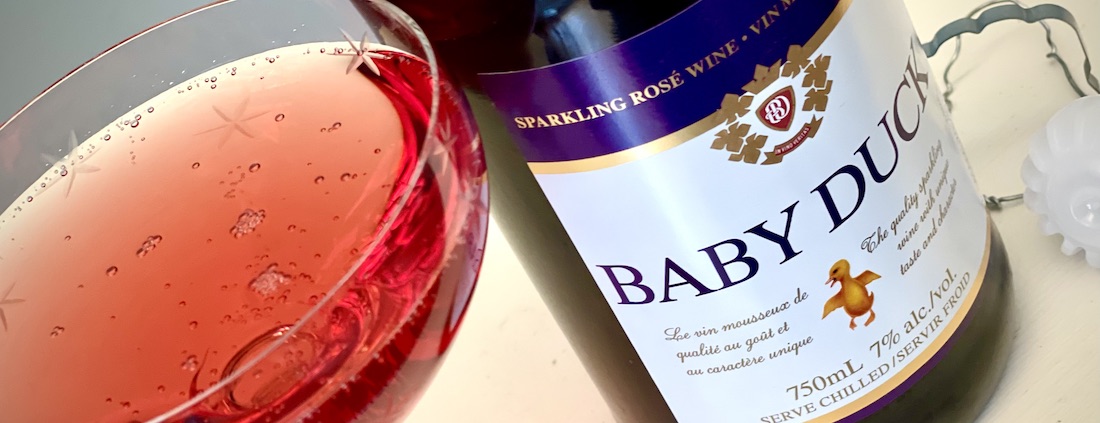




I would have paid money to watch Sigurdson sabre that puppy!
lol